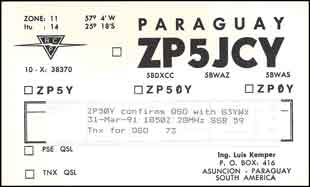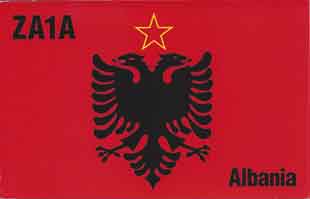Ham Radio Callsigns & Prefixes
Ham radio callsigns are used to idenfy a particular station - but the amateur radio call sign can give far more information . . . .
Ham radio call signs includes:
Callsigns
UK callsigns
Every amateur radio or ham radio station has a call sign. The reason for ham radio stations being given callsigns is that it is necessary to identify each station around the globe.
With world wide radio communications possible, ham radio stations can be heard from many hundreds of different countries.

In fact it was quickly found after radio started to be used that there was a need to organise radio communications. Part of their efforts to achieve this included assigning a callsign to every radio station including amateur radio stations.
Even today many radio stations use call signs, and this forms an essential part of the communications protocol. Obviously it is not necessary for applications such as cellular phones, or wi-fi use call signs as such, but even these forms of communication use various identifiers.
If they did not, then it would not be possible to route the data and telephone conversations to the correct destination. However the maritime and aeronautical services use call sign along with ham radio operators and this enables the station to be uniquely identified.
Ham radio call sign structure
All callsigns have an internationally agreed structure, and in this way it enables not only the station to be identified, but it also gives an indication of the country in which the radio station is located.
Call signs for the maritime, aeronautical and fixed radio services along with those used for ham radio operation have a slightly different format, but despite this it is possible to identify what sort of station is being heard by its call sign and its country of origin.
A ham radio call sign consists of two elements:
- Prefix
- Callsign serial characters

As the name suggests, the callsign prefix is the first part of the call. It consists of up to three characters and it is that part of the call up to and including the last number.
In other words in the ham radio call sign G3YWX, the prefix is G3. For VP8ANT it is VP8, and for 2E9QQQ it is 2E9.
The remainder of the call sign may consist one to three letters. These are effectively the "serial number" of the call.
These days most ham radio call signs have three letter, although in countries where there are very few stations, one or two letters may be used.
Also some very old amateur radio callsigns may only have one or two letters, and other countries use two letter callsigns as "vanity" callsigns.
Countries, prefixes & call signs
Each country is allocated prefixes for the radio callsigns which it can use. The International Telecommunications Union allocates blocks of prefixes that an individual country can use for everything from civilian aircraft and shipping to land based stations and of course amateur radio.
While the callsign formats for the different types of station vary, and again the format is defined, all types of callsign for the different applications are governed by these callsign blocks.
As mentioned, amateur radio callsigns have prefixes which are governed by this and therefore by reference to a list it is possible to identify the country and sometimes a district within the country where the station is located.
This can be very important for ham radio operators because it very quickly enables a broad location of a station that is heard to be determined.
An example of a typical ham radio call sign is G3YWX. In this ham radio call sign, the prefix is G3 and from the list of amateur prefixes it can be seen that the station is located in England.
Similarly the station VP8ANT is either in the Falkland Islands, South Georgia, South Shetland Islands, South Sandwich Islands, South Orkney Islands or the Antarctic. In fact this particular station was located in the Antarctic.
During contests or when stations are on the air from special events, stations may use different prefixes in their callsigns so that they can attract more attention.
Whilst these prefixes may not be within the normal amateur radio callsign lists they still fall within the internationally agreed prefixes allocated to countries for all types of stations.

The normal callsign for the station is ZP5JCY
| Short List of Some Common Callsign Prefixe Examples |
|
|---|---|
| Callsign Prefix | Country |
| B | China |
| CT | Portugal |
| DA - DR | Germany |
| EA | Spain |
| EI | Eire |
| ER | Moldova |
| ES | Estonia |
| ET | Ethiopa |
| France | |
| G, M, 2E | United Kingdom |
| I | Italy |
| K, N, W, AA - AK | USA |
| VE | Canada |
| XU | Cambodia |
| ZS | South Africa |
| 3A | Monaco |
| 5Y - 5Z | Kenya |
| 9H | Malta |
There are very very many more prefixes that are used on the air, but these give a feel for the variety of prefixes that are used and how they can enable identification of the country of origin of various amateur radio stations.
Call sign area codes
Sometimes the authorities within a country that issue ham radio callsigns further subdivide the callsign blocks they are able to issue so that it is possible to determine the actual area within the country where the amateur radio station is located or where the callsign was issued.
A prime example of this is the USA where the last numeral in the prefix for stations on mainland North America indicates the state in which the call sign was issued. Canada also adopts a similar approach with their call signs, along with many other countries.

Ham radio call sign suffixes
Often suffixes are added to a ham radio call sign to indicate if it is not operating from its base location. The actual definitions may vary slightly from country to country and some forms of operation may not be allowable in some countries, e.g. operation from aircraft is only allowed in a small number of countries.
| Common Callsign Suffixes |
|
|---|---|
| Callsign suffix | Purpose |
| - /M | Mobile operation |
| - /P | Portable operation, often including a temporary location |
| - /MM | Maritime mobile |
| - /AM | Aeronautical mobile |
With international travel more common these days radio amateurs often want to set up stations in other countries. If they anticipate being there for some while a totally new call sign for the country in question is usually allocated.
However if a short stay is envisaged the station is often not given a new call sign. Instead the home callsign is used with the prefix of the country where the station is located. Traditionally this additional prefix was added after the main call sign. For example G3YWX/VP9 would be located in Bermuda. However new international regulations suggest that and additional prefix is placed before the call sign. In this way F/G3YWX would be located in France.
The callsign and callsign structure is important because it enables many operators to discover a lot about the station - where it is located, whether it is operating in a differnet manner and so forth. Understanding about these callsigns gives a much greater understanding when checking out the amateur radio bands or wanting to talk to fellow radio hams.
 Written by Ian Poole .
Written by Ian Poole .
Experienced electronics engineer and author.
More Ham Radio Topics:
What is ham radio
Callsigns
Morse code
Voice modes
Digital data modes
QRP operating
Operating awards
Codes & abbreviations
Ham bands overview
Operating via differnet propagation modes
Repeaters
Callsigns
Contact formats
Setting up a shack & buying equipment
Return to Ham radio menu . . .



